Sudden Oak Death Surveys: 2005 - 2024
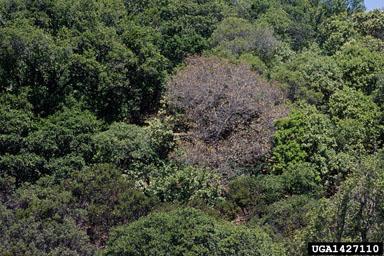
Photo: Joseph OBrien
Since 1995, large numbers of oaks and tanoaks have been dying in California. Since then, many other types of plants have been found to be infected or associated with this disease, referred to as sudden oak death, ramorum leaf blight or ramorum dieback, or by regulation as Phytophthora ramorum. Since April 2004, the disease has been confirmed in numerous West Coast counties.
Kentucky has been identified as a high risk area for sudden oak death because of the extensive oak forests within the state. This could have a severe effect on an economy that depends on the revenue generated from the sale of logs and wood products. Detections in nurseries that ship widely throughout the United States have increased concerns that this disease could appear in other U.S. nurseries and hence move to susceptible species in the surrounding environment. To address these concerns and because of the potential and documented movement of the disease on nursery stock, we surveyed nurseries in Kentucky for the presence of sudden oak death (Phytophthora ramorum) as part of a national survey for this disease.
We inspected high risk genera (Rhododendron, Pieris, Kalmia, Camellia, and Viburnum) for symptoms such as foliar blight and shoot dieback. Samples taken from suspicious plants were processed at the University of Kentucky Plant Pathology Diagnostic Laboratory in Lexington, KY or the Pennsylvania Department of Agriculture Plant Pathology Lab, depending on the year.
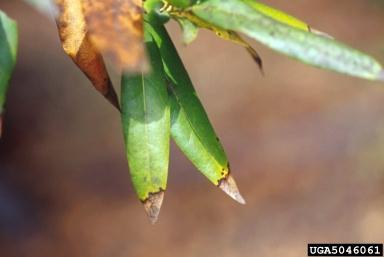
Photo: Joseph OBrien
| Year |
Number of Nurseries Number of Trace Forwards (TF) |
Plants Inspected Samples Tested All samples negative |
Map |
| 2024 |
18 nurseries 1 TF |
Plants Inspected: 446 Samples: 70 |
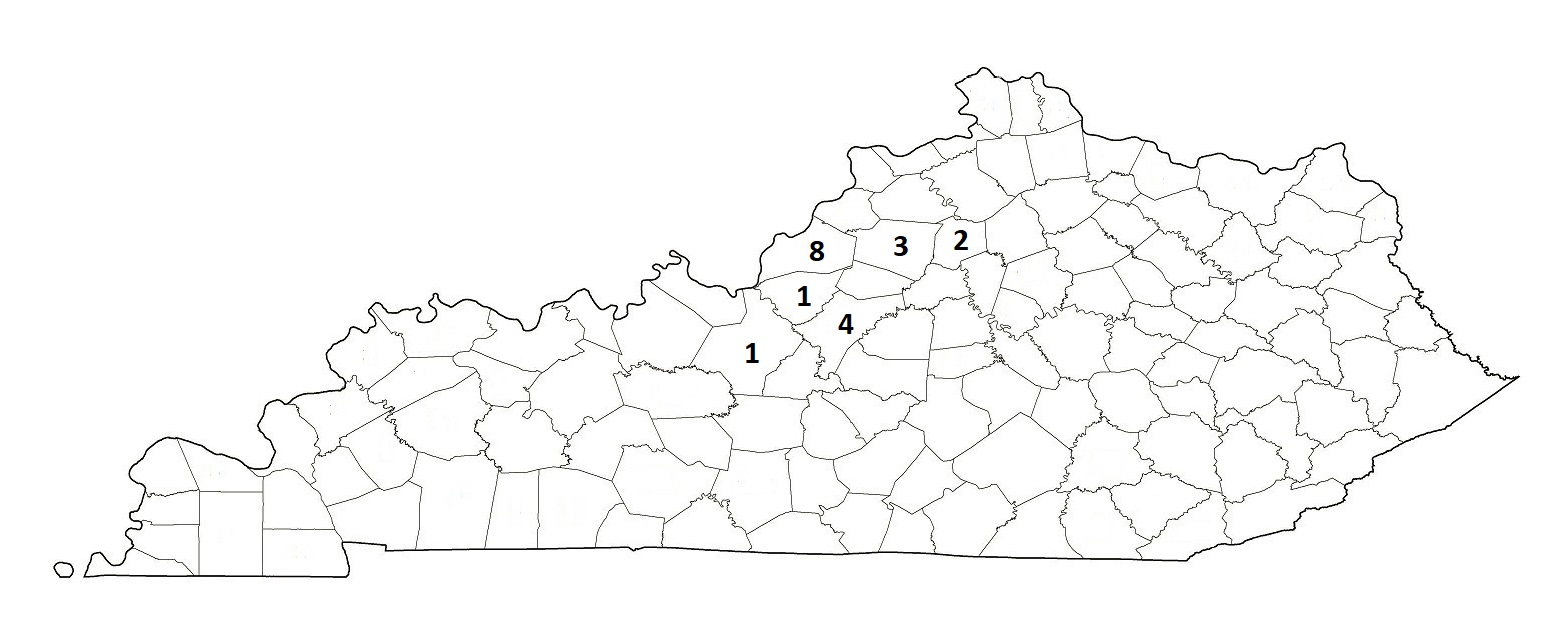 |
| 2023 |
20 Nurseries 3 TF |
Plants Inspected: 788 Samples: 79 TF Samples: 3 |
|
| 2022 |
20 nurseries 12 TF |
Plants Inspected: 1,372 Samples: 80 TF Samples: 73 |
 |
| 2021 |
20 nurseries 9 TF
|
Plants Inspected: 1,510 Samples: 68 TF Samples: 37 |

|
| 2020 |
24 nurseries
|
Plants Inspected: 2,282 Samples: 122 |
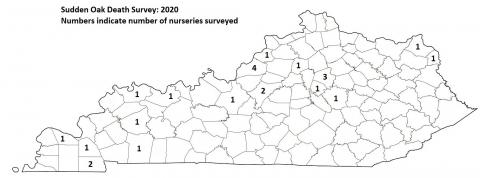
|
| 2019 |
25 nurseries 2 TF |
Plants Inspected: 944 Samples: 111 |

|
| 2018 | 30 nurseries |
Plants Inspected: 2,290 Samples: 165 Water Bait Samples: 6 |
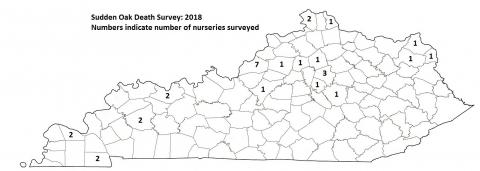
|
| 2017 | 24 nurseries |
Plants Inspected: 1,625 Samples: 98 Water Bait Samples: 8 |

|
| 2016 | 30 nurseries |
Plants Inspected: 2,177 Samples: 126 Water Bait Samples: 17 |

|
| 2015 | 30 nurseries |
Plants Inspected: 1,658 Samples: 123 Water Bait Samples: 18 |

|
| 2014 | 31 nurseries |
Plants Inspected: 3,015 Samples: 164 Water Bait Samples: 20 |
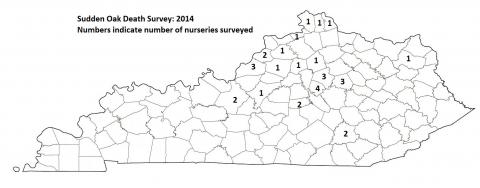
|
| 2013 | 35 nurseries |
Plants Inspected: 4,738 Samples: 284 Water Bait Samples: 20 |

|
| 2012 | 50 nurseries |
Plants Inspected: 4,985 Samples: 255 Water Bait Samples: 34 |

|
| 2011 | 20 nurseries |
Plants Inspected: 3,602 Samples: 114 |

|
| 2010 | 40 nurseries |
Plants Inspected: 2,470 Samples: 197 Water Bait Samples: 29 |

|
| 2009 | 20 nurseries |
Plants Inspected: 2,349 Samples: 93 |

|
| 2008 | 20 nurseries |
Plants Inspected: 622 Samples: 91 |

|
| 2007 |
20 nurseries Samples from 19 additional nurseries |
Plants Inspected: 3,057 Samples: 149 |

|
| 2006 |
21 nurseries Samples from 14 additional nurseries |
Plants Inspected: 10,353 Samples: 190 |

|
| 2005 | 99 nurseries |

|
